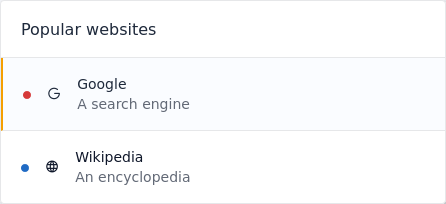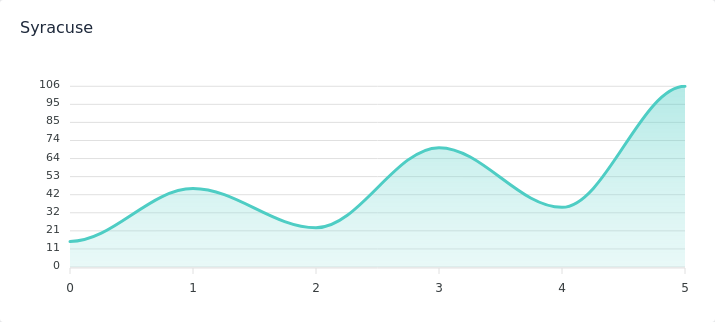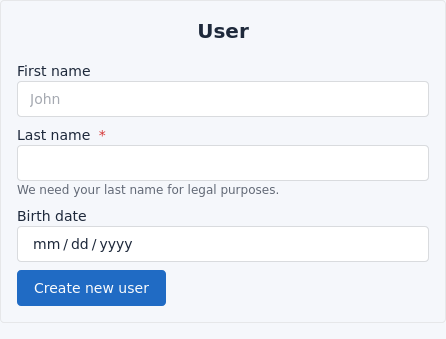SQLpage is an SQL-only webapp builder. It is meant for data scientists, analysts, and business intelligence teams to build powerful data-centric applications quickly, without worrying about any of the traditional web programming languages and concepts.
With SQLPage, you write simple .sql files containing queries to your database
to select, group, update, insert, and delete your data, and you get good-looking clean webpages
displaying your data as text, lists, grids, plots, and forms.
| Code | Result |
SELECT
'list' as component,
'Popular websites' as title;
SELECT
name as title,
url as link,
CASE type
WHEN 1 THEN 'green'
ELSE 'red'
END as color,
description, icon, active
FROM website; | |
SELECT
'chart' as component,
'Syracuse' as title, 'area' as type;
SELECT month AS x, SUM(revenue) AS y
FROM income GROUP BY month; | |
SELECT
'form' as component,
'User' as title,
'Create new user' as validate;
SELECT
name, type, placeholder, required,
description, min, max
FROM user_form;
INSERT INTO user (first_name, last_name, birth_date)
SELECT ($first_name, $last_name, $birth_date)
WHERE $first_name IS NOT NULL; |
- sqlite
- PostgreSQL, and other compatible databases such as CockroachDB and Aurora.
- MySQL, and other compatible databases such as MariaDB and TiDB.
SQLPage is a web server written in
rust
and distributed as a single executable file.
When it receives a request to a URL ending in .sql, it finds the corresponding
SQL file, runs it on the database,
passing it information from the web request as SQL statement parameters.
When the database starts returning rows for the query,
SQLPage maps each piece of information in the row to a parameter
in one of its pre-defined components' templates, and streams the result back
to the user's browser.
- Install docker
- In a terminal, run the following command:
docker run -it --name sqlpage -p 8080:8080 --volume "$(pwd):/var/www" --rm lovasoa/sqlpage- (
"$(pwd):/var/www"allows sqlpage to run sql files from your current working directory)
- Create a file called index.sql with the contents from this example
- Open https://localhost:8080 in your browser
SQLPage can be configured through either a configuration file placed in sqlpage/sqlpage.json
or environment variables such as DATABASE_URL or LISTEN_ON.
For more information, read configuration.md.
Additionally, custom components can be created by placing .handlebars
files in sqlpage/templates.
You can run SQLpage serverless by compiling it to an AWS Lambda function. An easy way to do so is using the provided docker image:
docker build -t sqlpage-lambda-builder . -f lambda.Dockerfile --target builder
docker run sqlpage-lambda-builder cat deploy.zip > deploy.zipYou can then use deploy.zip as the source for an AWS Lambda,
selecting Custom runtime on Amazon Linux 2 as a runtime.
When running serverless, you can include the SQL files directly in the image that you are deploying. But if you want to be able to update your sql files on the fly without creating a new image, you can store the files directly inside the database, in a table that has the following structure:
CREATE TABLE sqlpage_files(
path VARCHAR(255) NOT NULL PRIMARY KEY,
contents BLOB,
last_modified TIMESTAMP DEFAULT CURRENT_TIMESTAMP
);Make sure to update last_modified every time you update the contents of a file (or do it inside a TRIGGER).
SQLPage will re-parse a file from the database only when it has been modified.
- actix web handles HTTP requests at an incredible speed,
- tabler handles the styling for professional-looking clean components,
- tabler icons is a large set of icons you can select directly from your SQL,
- handlebars render HTML pages from readable templates for each component.



